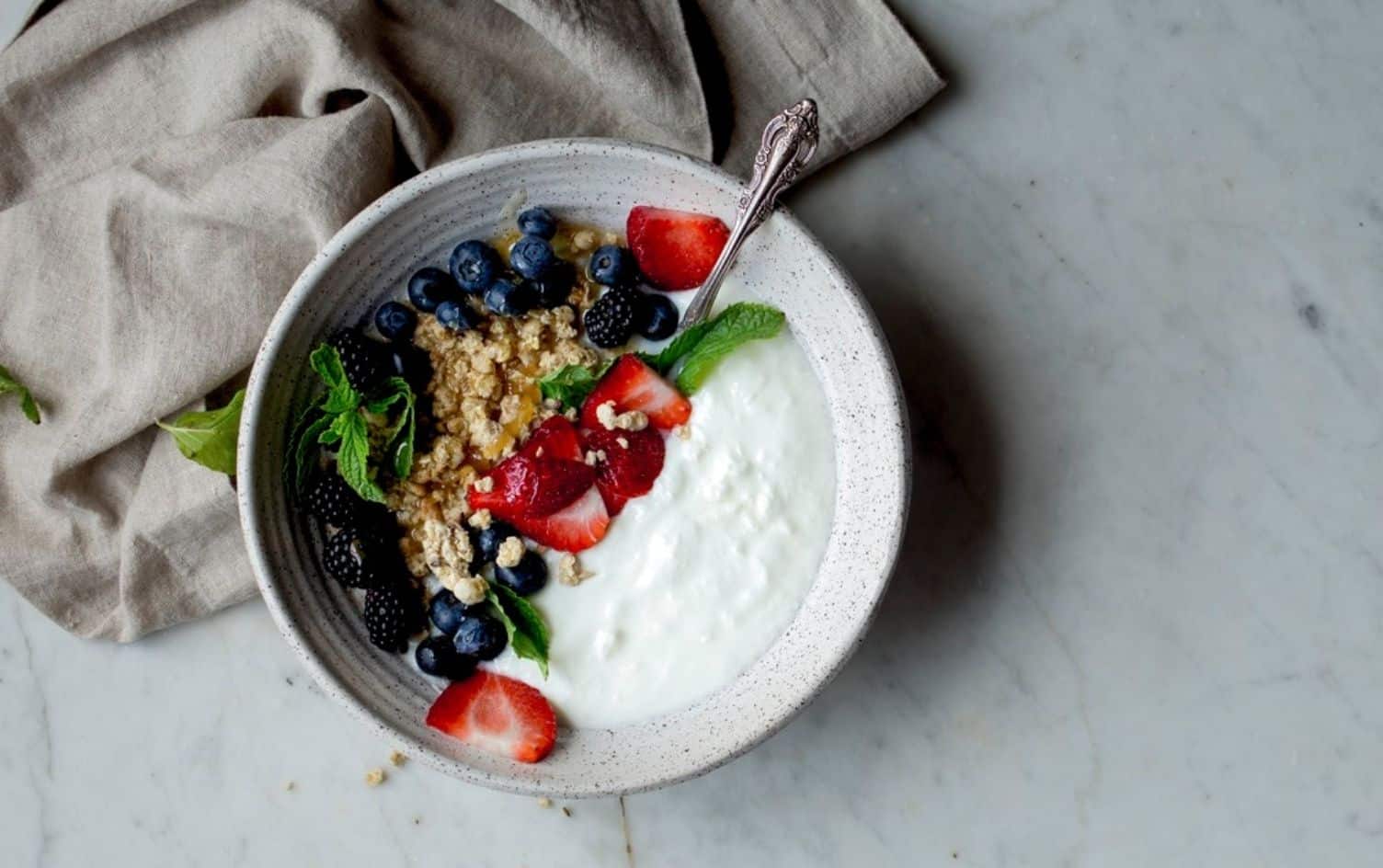You, me and everyone with a spoon have been privy to the thick yogurt revolution of recent years for its high-protein, cool and creamy convenience. Most of us agree there are many reasons to love Greek yogurt — it has twice the protein of regular yogurt and it seems to be a healthful snack. But many dietary and environmental factors turn this treat into sour milk, meaning you should reconnect with good ol’ delicious regular yogurt instead.
WHAT IS GREEK YOGURT?
To make Greek yogurt, plain yogurt, traditionally made from whole milk, is strained to remove most of its liquid, a cloudy brine of whey and lactose. Not all Greek yogurts are created equal; the amount of removed liquid determines its thickness and nutritional content. Similar products include labne, a Middle Eastern yogurt cheese strained until it’s thick enough to be spread with a knife, and skyr, a super thick Icelandic yogurt usually made from strained nonfat yogurt. In the U.S., the most popular national brands of Greek yogurt are Fage and Chobani.
THE GOODS ON GOING GREEK
About 7 ounces of Fage whole-milk Greek yogurt has 190 calories, a massive 18 grams of protein (about twice that of regular yogurt) and just 8 grams of sugar, making it a filling breakfast or snack that treads lightly on the daily diet.
Cooking with Greek yogurt is great, as it can take the place of sour cream, creme fraiche or cream cheese on toast, in baking or just about anywhere. Super-thick, Greek-style yogurt like labneh stands on its own as an appetizer drizzled with good olive oil and sprinkled with za’atar spices.
With minimal effort, Greek yogurt is extremely easy to make at home. Line a fine-mesh sieve with a piece of thin, all-cotton fabric and place it over a catch bowl. Pour regular plain yogurt into the cloth and let the liquid pass through. The longer you let it sit — from a few hours to a full day — the thicker it will become. Leave it at room temperature for a tangier taste, or refrigerate it to tame its bite. And don’t t throw away that pleasingly-sour lactose and whey, as it’s full of galactose, calcium phosphate and lactic acid. Use it in smoothies, cocktails or in cooking instead of lemon juice. Some also use it for making pickles or for an acidic brine for poultry. Others swear by it as a hair rinse for shiny locks.
THE BAD AND THE UGLY
Because Greek yogurt is denser than regular yogurt, you’re going to pay more for that extra protein boost. And it might not just be your wallet growing a cavity; it could also be your teeth. Flavored Greek yogurts with added sugar count as dessert with 32 grams of sugar or more per 1-cup serving. (Fresh fruit, a spoonful of low-sugar jam or a scant drizzle of honey are the way to go if you can’t take it straight.)
Not all Greek yogurt is as wholesome as promised. Rather than straining yogurt, some manufacturers rely on added thickeners like whey concentrate, gelatin or modified cornstarch to make the yogurt more viscous. Yogurt made this way won’t have the same nutrition as the real deal, but it might just be better for the environment.
Speaking of which … one of the biggest problems with an uptick in Greek yogurt consumption is the overabundance of its waste product: uneaten lactose and whey liquid. The leftover whey from most cheesemaking is a sweet whey, and it has plenty of uses in industrial food processing, including in animal feed and protein powder dietary supplements. But the acidic whey that comes from Greek yogurt production — which amounts to two to three times the volume of the Greek yogurt sold — has limited use in the food and agricultural chain. While a small amount of it can be used in farming, most of it ends up being dumped, and its acidity can be harmful to the environment in large quantities.
Though everyone loves Greek yogurt’s terrific spoon appeal, we might all be better off reaching for perfectly delicious regular yogurt instead.
Originally published June 2017
Ready to take the next step? Unlock MyFitnessPal Premium to access custom goal settings, quick-log recipes, and guided plans from a registered dietitian. Premium users are 65% more likely to reach their weight loss goals!




